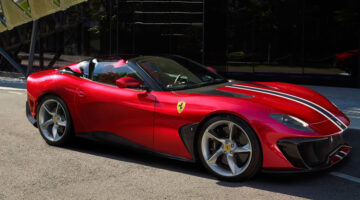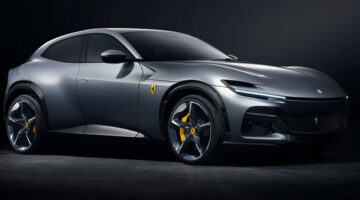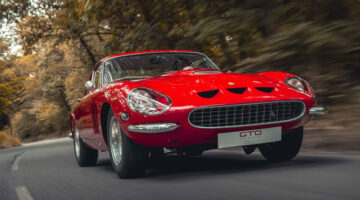The Ferrari F50 should have been THE supercar of its day. And yet, thanks to the McLaren F1 – it remains one of the most underrated Ferraris ever developed.
[Not a valid template]Consider the supercars of today – your Ferrari 458s, McLaren MP4-12Cs, your Mercedes-Benz SLS AMGs – and ‘Formula 1-inspired technology’ is not only provided, it’s almost expected. Take LaFerrari for instance, bursting at its carbon fibre seams with a racing gearbox, super-lightweight materials, and a Kinetic Energy Recover System (F1’s contentious KERS program that’s been on the scene for four years). It’s all stupefyingly complicated – even the MP-05 LaFerrari watch has more mechanical gubbins than your standard hatchback – and that apparently is what we now look for in a supercar. That and toupe-rippling bursts of acceleration.
Wind the clock back twenty years or so and this principal was only just starting out. Indeed, when Ferrari began planning the third member of its Special Edition Series, the successor to the illustrious F40, and tribute to the company’s 50th anniversary. But unlike the F40, the F50 would be something else entirely. It was to be a technical masterpiece. It was to become the closest thing to a Formula 1 single seater you could legally drive on the road. This was the principal anyway from Ferrari powers that be: rumours abound that marque Vice President (and Enzo’s second son) Piero Ferrari was the go man after wondering how his F40 company car would perform if prepared for the track. To celebrate 50 years of the prancing horse, precision would outweigh power.
Of course that didn’t mean the new F50 couldn’t pack a punch. Whereas the preceding 288 GTO and F40 ran turbocharged V8s, the newboy was fitted with a naturally aspirated V12, essentially the same 12 cylinder unit that powered the company’s 1990 641/2 Formula 1 car. Albeit not without some considerable modifications: revving to 13,500rpm on the roads and harpooning passers-by with escaping spark plugs didn’t sit well in the boardroom. Tireless development led to a handier yet still fully capable 4700cc unit that still chucked out an impressive 520hp, enough to hit 100kph from standstill in just 3.7 seconds.
Understandably though, for a company under whom F1 designer John Barnard was already carving his legacy, chassis design and aerodynamic efficiency was crucial. Inboard pushrod-operated suspension allowed for greater reaction over road surfaces, and a new composite monocoque attached to a tubular steel chassis offered greater rigidity over the company’s preceding designs. Ferrari itself claimed its new work to be three-times stiffer than a steel monocoque, an impressive claim given that the F50 was available as both a Berlinetta (coupe) and Barchetta (convertible). Due diligence was also paid to weight saving. Electric windows and seats were the first to hit the skip. Even cupholders were considered unnecessary ballast.
Above even this though, on the model’s debut at the 1995 Geneva Motor Show, the F50’s distinctive looks was the talking point. Penned by Ferrari favourite Lorenzo Ramaciotti, the bold design was inspired to an extent by Pininfarina’s Mythos concept, whose sleek profile had caused a stir on its debut in Tokyo six years earlier. Barely recognisable when parked line-astern, Ramaciotti’s imagination and extensive wind tunnel testing for ‘optimised aerodynamics’ took on the brunt of the work styling the F50. Jutting grooves in the bonnet and along the flanks allowed the air to travel seamlessly around the supercar at pace, whilst a solid rear wing removed the threat of any new owners knackering the balance by changing any settings. Striking yes, and clever to boot. But not very…Italian. It left many clamouring for the F40’s raw beauty despite a few rough edges.



